Context
I've written a class to handle settings for my ASP.NET MVC app. However after testing how it handles a malformed/ missing XML file the exception it seems to throw is uncatchable and it repeats endlessly without catching or moving on with execution.
I've disabled the V.S. Debug Dialog popup in the past but again it seems repeat the same segment of code. I do not have a loop anywhere else that calls this property and there is default behavior if the property doesn't return a valid value.
Breakpoints beyond the failing function are not reached, however the breakpoint on or before the XML exception are repeatedly reached...
P.S. there is a lot of failed testing code left over to get a workaround working.
Screenshot:

Screenshot:

EDIT: I must clarify I have tried alternate XML parsing tools, any XMLException here is not caught.
Code ['Setting container' Property]:
private static Settings _singletonSettings;
public static Settings SettingsContainer
{
get
{
if (_singletonSettings == null)
{
_singletonSettings = new Settings();
_singletonSettings .LoadSettings();
}
return _singletonSettings;
}
private set
{
_singletonSettings = value;
}
}
Code ['LoadSettings function']:
public void LoadSettings()
{
string filePath = "Config/Settings.txt";
if (!Directory.Exists(Path.GetDirectoryName(filePath)))
{
Directory.CreateDirectory(Path.GetDirectoryName(filePath));
}
if (File.Exists(filePath))
{
try
{
SettingsContainer = LoadViaDataContractSerialization<Settings>(filePath); // Desperately trying to catch the exception.
}
catch (Exception ex)
{
Log.GlobalLog.WriteError("LoadViaDataContractSerialization() error:\n" + ex.Message + "\nStackTrace: \n" + ex.StackTrace);
}
}
else
{
File.Create(filePath);
}
if (SettingsContainer == null)
{
SettingsContainer = new Settings();
}
}
Code ['LoadViaDataContractSerialization']:
public static T LoadViaDataContractSerialization<T>(string filepath)
{
try
{
T serializableObject;
using (var fileStream = new FileStream(filepath, FileMode.Open))
{
try
{
using (var reader = XmlDictionaryReader.CreateTextReader(fileStream, new XmlDictionaryReaderQuotas())) //All execution stops here with the
{
var serializer = new DataContractSerializer(typeof(T));
serializableObject = (T)serializer.ReadObject(reader, true);
reader.Close();
}
}
catch (XmlException ex)
{
Log.GlobalLog.WriteError("LoadViaDataContractSerialization() XML Fail: Message: " + ex.Message + "\n StackTrace: " + ex.StackTrace);
return default(T);
}
fileStream.Close();
}
return serializableObject;
}
catch (Exception ex)
{
Log.GlobalLog.WriteError("LoadViaDataContractSerialization() Fail: Message: " + ex.Message + "\n StackTrace: " + ex.StackTrace);
return default(T);
}
}